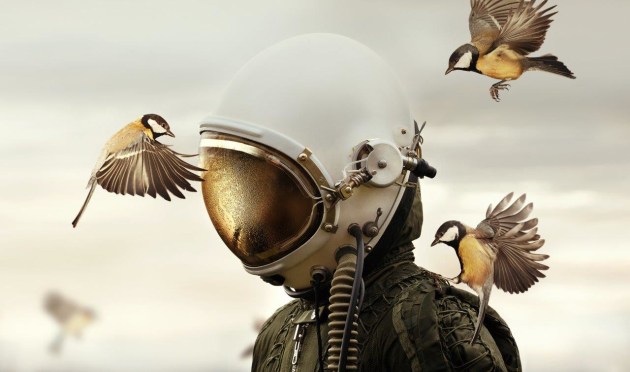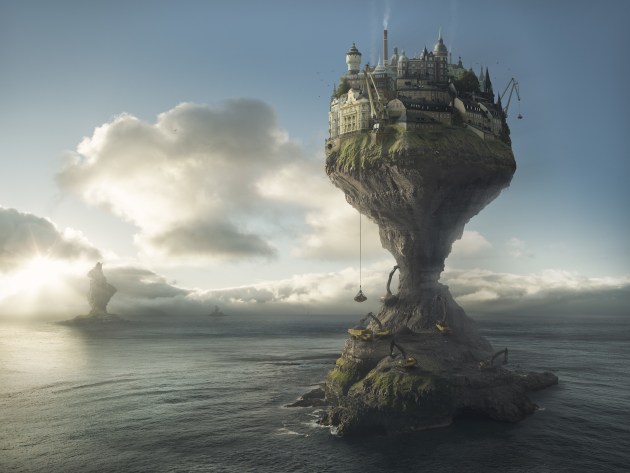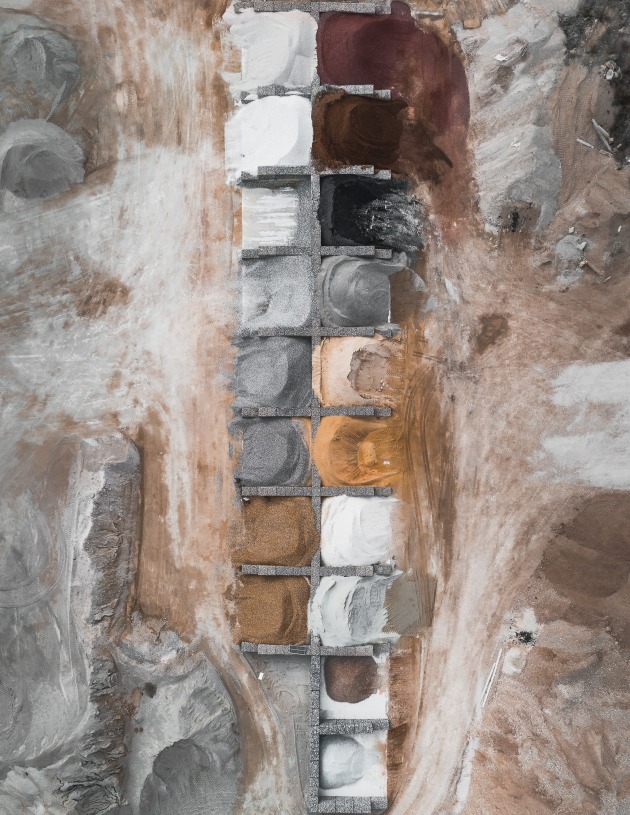The quest for creativity
Picasso famously said, “All children are artists. The problem is how to remain an artist once [one] grows up”. Science-based research shows that both creativity and non-creativity is learned behaviour, and the activities we engage in will either teach us to cultivate creativity, or they’ll teach us not to be creative or think creatively. Sophia Hawkes spoke with five creative photographers to gain insight into their creative lives and share ideas on how you can live a more creative life.

Where does creativity come from?
In his well-known TED talk on education and creativity, Sir Ken Robinson proclaimed that “we don’t grow into creativity, we grow out of it”. Indeed, science reveals that children are highly creative, but often lose this ability over time. Is Robinson right? Are we educated out of creativity?
Swedish-born surrealist photographer, Erik Johansson believes his creativity has always been there. “To keep creativity, we have to try to remain playful and curious . . . It’s about looking at the world and making unexpected connections . . . about creating by combining things,” he says. For him, it’s a matter of quite radical self-responsibility. “It’s not so much about the environment you’re in, it’s about what you do with that environment,” Johansson says. These sentiments are backed up by creative consultant and author James Clear, who states that creativity is “new connections between old ideas . . . taking what’s already there and combining it in new ways”.
Munich-based Tom Hegen is a graphic designer and photographer passionate about aerial photography. He draws inspiration from considering his audience and knowing what he wants to trigger in them. “I want to tell stories of the relationship between man and nature by using abstraction as language to inspire people,” he says. He hopes this actively involves his audience, leading them to explore hidden information in his imagery. He’s intrigued by people not knowing what they are looking at, having to decode the image. Creativity is everywhere; people “act as designers to shape our environments . . . I try to find creativity by reading between the lines,” he says. To Hegen, the world is a huge artwork and it’s his task as a photographer to “focus on details and frame them”. This recognition of creative expression in the world around him enhances his creative vein, something he believes we all possess.
Bella Kotak, a fine art, fashion, and portrait photographer currently based in Oxford and London, agrees. “Creativity comes in many forms and we’re surrounded by it. Everything around us was borne from a creative idea,” she says. She finds creativity by seeking things out of the ordinary that make her stop and think. “I think you can train yourself to be creative through curiosity, practise, and by accumulating knowledge. The more you know, the more you have to experiment with,” Kotak states. “If an image stirs something in you, then there’s something special about it. The magic lies in the creative choices the artist made to convey their message.”

Prague-based, award-winning photographer, Martin Stranka derives the majority of his income from exhibitions and limited edition print sales. Commissioned work only takes up a small portion of his time. “I cannot imagine working on an image and feeling pressured for time”, he says. His images have been used for book covers for publishers including Harper Collins, Sterling, and Penguin Random House. His work has also been licensed by Adobe and Disney, and published in The Guardian, The Daily Telegraph, and many others. He’s also won over 80 major international photography awards including World Photography Award, Sony World Photography Awards, Professional Photographer of the Year, Nikon International Photo Contest, Prix de la Photographie Paris, and the International Photography Awards. Stranka, like Hegen and Kotak, sees creativity everywhere, and he expresses a profound appreciation for creativity in life unfolding. “I taught myself to search for and find creativity in every ordinary moment . . . the smell of autumn, or a freshly printed newspaper bringing you a memory of your childhood, flying birds in the rain, a touch from a stranger walking past, a feeling or sense impression of love – when you think of somebody you love or moments when you lost someone close to you,” he muses.
In the world of Australian photographer Ben Thomas, creativity is split into two components: exploration – looking for pictures; and composing – bringing the pictures together. His project, Cityshrinker, pioneered the tilt-shift technique for art in 2007. Since then, he’s used mirror and kaleidoscopic techniques in Chroma (2015) to explore how repeating patterns and objects are fundamental to urban environments. More recently, Chroma II made use of urban flatness and colours to deconstruct and question how society defines place. Thomas believes you have to practise creativity frequently, and that it’s important to find something that you’re really happy spending a lot of time on without thinking about any rewards beyond the process itself. Keith Sawyer, a creative guru and professor at the University of North Carolina further emphasises that hard work and creativity cannot be separated, and that “artists are embedded in the world, just like the rest of us”.

How to cultivate creativity and manifest ideas
Those interviewed all stated that music supports and inspires them. In order to remain creative, Thomas believes it’s crucial to keep things fresh, find a rhythm, and move outside your comfort zone. To work well creatively, he needs space, music, and good coffee. But more than anything else, it’s his network of creative colleagues that feeds his creativity. He stays inspired by challenging himself and bouncing ideas off his network, but highlights that “you will always be your greatest critic, so be sure to stay true to yourself and the work you create”. Thomas grows with work that makes him do things differently. “I need to feel like I’m being challenged to enjoy the work. When that stops, I’ll put down the camera,” he says.
Stranka is more focused on inner reality than Thomas and it’s clear that he accesses a private, creative universe by closing his eyes and turning inwards. He stays connected to this universe by activating his senses, out of which touch and smell are the most powerful. “I always try to touch and smell basically everything. These little practices and experiences give me what I need,” he says. When being competitive, with himself or others, Stranka finds that havoc rules his creative universe. “Creating art is not a competition . . . It should fulfil you. You should enjoy it,” he says. Turning inwards also helps him choose amongst the myriad of ideas. “I learned to listen to my inner voice, and after a few days or weeks there is always one most vibrant and colourful idea that stands out. I only need to calm down and let my heart do its business. I choose the idea closest to my heart – not by using a rational part of myself,” Stranka elaborates. Kotak feels the same ways. “It’s where your heart is, and the passion you have for the idea that will break barriers,” she says.

Likewise, Johansson often has more ideas than he can possibly manifest. “When an idea comes to me, it’s usually just a small little thing or a combination of things I find interesting,” he says. As soon as he gets an idea, he writes or sketches it down; otherwise it can be gone just as quickly. He has a few sketch books going at a time and typically carries one everywhere. Sometimes, it’s a case of taking a note down on the phone so that it’s not lost. “You get used to catching these ideas flying around,” he says. When deciding what idea to work on, Johansson says that “it’s a gut feeling”. He doesn’t think about what people will buy or the expectations of others. It’s about what he finds interesting. And what makes an image interesting is that it makes you think or creates some kind of reaction. Similarly, Thomas records ideas as they come to him; sometimes he’ll use them instantly. Other times, he will put them aside for later when they pop up in a new, perfectly timed context.
To help boost her creativity, Kotak writes a lot and scribbles things down that inspire her. Much like Thomas, Kotak uses a network of creatives to share and learn with; feedback is invaluable. “I think it’s important to stay curious and never be satisfied. There’s still so much to learn . . . the more you know, the more you can grow,” she says. As we evolve, our art will evolve with us.” Kotak says she works best under a deadline. “I suspect it’s one of the many reasons why I love working with nature. It moves in its own time and doesn’t wait for anyone. Spring flowers slip away into summer blooms. This cycle excites and motivates me to create against an ever-changing landscape.”
Getting stuck is out of your control; getting unstuck isn’t
Getting stuck is a natural part of the process. It’s important to know what helps you push through when the going gets tough. Johansson isn’t always swimming in abundant, creative juices. When in a creative rut, he revisits old sketches and notes of earlier ideas. What also helps him get unstuck is doing something completely different, and he often draws inspiration from painters, rather than photographers. Being stuck creatively isn’t only about not having any ideas, it’s also about how to actualise ideas or solve problems in their manifestation. He seeks feedback from people he trusts to give their honest opinion. “You get so used to an image when you work with it a lot that it’s hard to see what’s good and bad in the end,” he explains.

As creative ideas aren’t static events, but processes, Johansson tries to plan the execution of them well. This phase usually takes a few months, but sometimes years, and he believes ideas need time to grow from more than just a “crazy picture” into an image with meaning, or a story. “It’s about what you want to say with the image,” he continues. He explains that “it’s a balance between giving ideas time and giving yourself deadlines, otherwise projects may never be finished”. The seasons give him a deadline in tune with natural cycles. Although the short deadlines with commissioned work sometimes prove challenging, Johansson attempts to balance time for growth with deadlines by working on several ideas parallel to each other.
Thomas also likes working on a few ideas at the time as it helps him to keep things fresh. Creativity comes in waves. When the creative ocean is rough, Thomas manages to catch a wave by looking at ideas from different angles with help from his creative network. This also refines his ideas. “Persistence is really important. You need to keep pushing when things seem like they’re going nowhere, or when you’re not getting the response you want. Set your goals, short and long term, and don’t lose sight of them,” Thomas suggests. In contrast to Johansson, Thomas, like Kotak, thrives with deadlines. “Deadlines are always great. They obviously bring a level of stress to a situation, but they do bring focus . . . Learning to perform under pressure is one of life’s greatest skills,” he says. He adds that his creativity thrives when working on projects pushing him to do things differently. Being in a creative wasteland can be painful, but very rarely can there be growth without pain. It’s a matter of persevering through the times of growing pains, and to embrace, and even seek challenges as they are intrinsically linked to growth.

Hegen and Stranka also seek new perspectives when they get stuck creatively. Engaging in multi-sensual experiences, like hiking or mountain-biking, frees Hegen’s mind, enabling him to step back and rethink a concept. Stranka too uses the outdoors too loosen things up creatively when he’s feeling smothered. When stuck in the process of executing ideas, Stranka gets back to nature, and just sits and watches the horizon, or listens to the sounds of the forest, the birds singing, the wind in the trees, or the silence in between. For him, one image leads him to another, having revealed perspectives and connections previously unseen. For example, he shot I Can Hear You Call, with a fox, and then another image with a small deer. These two pieces were steps into the wild-animal series. From there he came up with the idea to add in a human element with the animals, creating the image, Until You Wake Up, which featured a white deer and a crashed car, and Dreamers and Warriors, with a pilot’s helmet and birds as symbols of “our dreams and fighting against our fears”.
But don’t be fooled; Stranka is no demi-god who’s never encountered a creative block. About five years ago, he had a rather significant one. After publishing his first photo book, he had the overwhelming feeling that it was over. “I felt like I finished some kind of era . . . there was no need to create images anymore. It was a really weird feeling.” This feeling was so strong, however, that in front of an audience, Stranka declared: “Maybe this is the last thing I do in terms of photography”. He didn’t take another photo for eighteen months. Then, he found a need inside himself to create images again. “I think it was the biggest obstacle I’ve had to fight against, but I won in the end. I feel so grateful I got over it.”

Despite her ability to stand strong and keep her creative fire burning, Kotak too gets stuck. Often it’s because she’s feeling burnt out. “I visit museums, galleries, read, and watch movies that I feel will inspire. I essentially give the mind some space . . . I love exploring new places, photographing faces, meeting new people, and testing ideas that I have noted down.” Trying new things, techniques, and practising new ideas is great medicine for growth and creative flow, according to Kotak. Creative blocks happen to everyone. It’s by staying focused and having a strong will to achieve, even when things aren’t flowing, that you’ll grow as a photographer. Get to know yourself, and what will summon your muse if you find yourself wilting in her absence.
Creativity and money
Money often becomes a dirty word in creative circles and what’s seen as selling out, where one’s artistic integrity is called into question, is frowned upon. But let’s face it, to create significantly and abundantly, money is a crucial element. Can making money and creative authenticity coexist?
Johansson started creating images for fun, not to make money. Over time he got work request from people seeing his images. Publicly shared photos became “a shopping window drawing in clients . . . my creativity shows people what is possible,” he explains. Now, he works on a couple of bigger ad campaigns per year to finance time to create personal work. Without this time to freely create, he wouldn’t draw in new clients as it’s his unique creativity they are after. Hegen too uses commissioned work to finance time spent pursuing his true artistic expression. Although a lot of the commissioned work isn’t as experimental or creative as he’d wish, it gives him the opportunity to later create freely, taking images he can exhibit and make publicly available, and this in turn feeds the commercial aspect of his photography.
Similarly, Stranka gives voice to this creativity-money feedback loop. “I think that financial success is a side effect when you do what you love. Because, when you do something you love, you do it often. When you do something often, you do it better and better. When you are good at something, it always attracts the interest of other. When you have their interest, it always brings in money,” Stranka says. Thomas, on the other hand, explains the link between creativity and sourcing clients by stating that the key is to find your own eye and voice. “Every photographer should be asking themselves what sets their work apart from the next person’s,” he says.

the power within yourself to bloom into the person you were born to be.”
The photographers here have described how they foster creativity, find balance between creative freedom and productivity, and what helps them get unstuck once stuck. These insights are simply summarised, by James Clear’s five step breakdown of the creative process: gather new material, thoroughly go over the materials in your mind, step away from the problem, let your idea return to you, and shape and develop your idea based on feedback. By recognising creativity in the world around you, it’s possible to harness and enhance your own creativity. Creativity has multiple faces, but it’s about making new, unusual, or emotive connections between pre-existing elements. As romantic as it may seem to be a highly creative individual, it’s hard work and knowing when to step back to regain focus is essential. If you want more creativity in your life, follow these guidelines, and see what happens.

Contacts


Get more stories like this delivered
free to your inbox. Sign up here.

